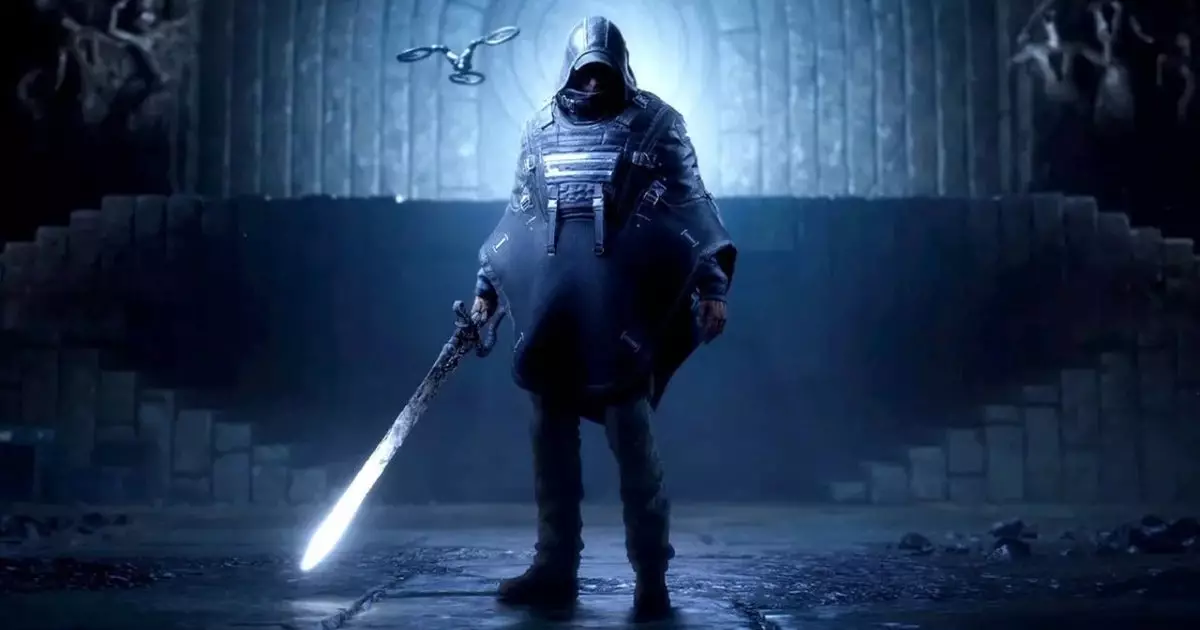When one first glimpses the trailers for “Hell Is Us,” an air of intrigue and a dash of skepticism fills the viewer’s mind. Initially marketed as an “arty” title, the game’s presentation subverts those expectations dramatically. With its over-the-top narrative proclamations—such as, “when the fury of emotions sparks the wildfire of violence, it dissolves our illusions,”—the tone swiftly shifts from artful to bold theatricality. It’s as if the creators have taken a deliberately grand approach, reveling in what can only be described as glorious nonsense. This blend of high-concept idealism with overt melodrama suggests a uniquely ambitious project that straddles the line between inventive storytelling and exhilarating gameplay.
At its core, “Hell Is Us” positions itself as a third-person action-adventure game enriched with melee combat and dynamic exploration. Players will engage in encounters armed with futuristic weaponry reminiscent of lightsabers, complemented by the integration of drones, hinting at a gameplay style that is as much about visceral thrill as it is about strategic engagement. The environment is as central to the experience as the storyline, featuring a mix of dilapidated military outposts and eerie, otherworldly motifs. In this vividly constructed world, players assume the role of Rémí—a protagonist whose search for identity unfolds against a backdrop of civil strife and fantastical adversaries.
Beyond the aesthetics and mechanics, it is essential to note that “Hell Is Us” is helmed by Rogue Factor, under the aegis of Nacon. Having expertise from the art director behind “Deus Ex: Human Revolution,” Jonathan Jacques-Belletête, the project seems to promise an equally rich visual narrative that might recall classics such as “Alan Wake” and the tactical breadth of the “Tom Clancy” series. However, rather than merely replicate existing frameworks, it aims to carve out an identity of its own, rooted in both gameplay and storytelling.
The Concept of Player-Plattering
Perhaps one of the more enigmatic terms attached to this title is “player-plattering.” This innovative gameplay mechanic aims to revolutionize player interaction by allowing individuals to navigate and explore based on environmental cues rather than through traditional navigation aids. The intent is to evoke a sense of autonomy, fostering a more organic exploration of the game’s universe. As the developers suggest, this method encourages players to rely on their instincts, refraining from the ‘gamey’ markers that often dictate modern gaming experiences. While the name might elicit confusion—perhaps conjuring images of culinary delights—the underlying principle aims to enrich player engagement by removing unnecessary scaffolding.
Having seen discussions around “player-plattering,” the anticipation surrounding its execution adds another layer of depth to “Hell Is Us.” The promise of exploring narrative-driven environments in a more instinctive manner rekindles memories of adventure games from earlier eras, where discovery played a predominant role in gameplay. Striking a balance between exploration and inherent player freedom could potentially redefine expectations of interaction within gaming narratives.
Elias Toufexis lends his voice to the character of Rémí, an essential aspect of the narrative experience. Known for his distinctive vocal presence as Adam Jensen in the “Deus Ex” series, his involvement signals a familiarity that could resonate strongly with fans of narrative-driven titles. There’s a sense of comfort in recognizing a voice associated with complex characters, which could enhance the emotional stakes of Rémí’s journey. The juxtaposition of an established voice actor against an ambitiously crafted storyline fosters a connection that may engage players on multiple levels.
“Hell Is Us” is shaping up to be an intriguing combination of high-stakes narrative, immersive exploration, and innovative mechanics. With themes that challenge the player’s perception of reality and offer unique ways to engage with the game world, it promises to be an adventure steeped in tension and discovery. As it gears up for its release on September 4, 2025, both critics and players alike are left to ponder how this melding of ideas will resonate in an ever-evolving gaming landscape. Whether it balances its ambitious concepts with engaging gameplay remains to be seen, yet it undoubtedly occupies a unique position on the horizon of new video game ventures.


Leave a Reply